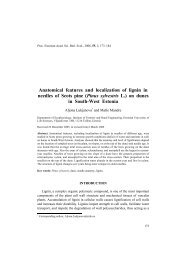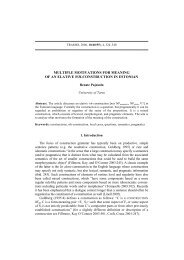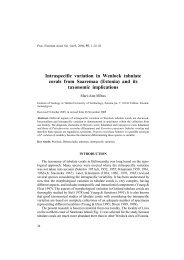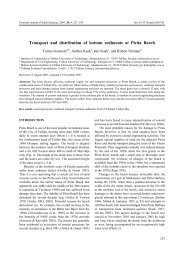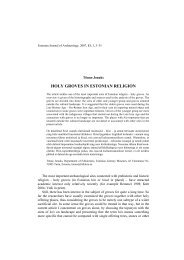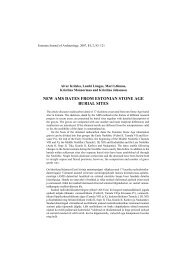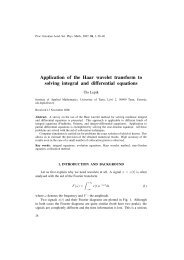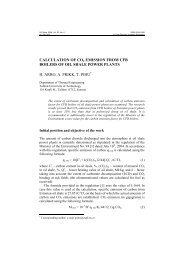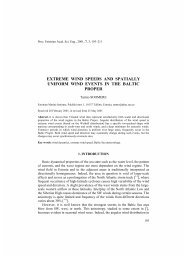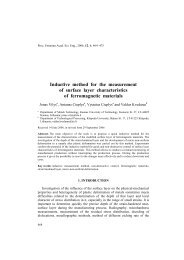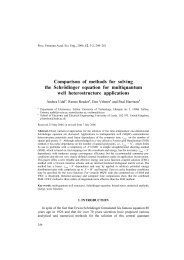Dynamic coefficients in impact mechanics
Dynamic coefficients in impact mechanics
Dynamic coefficients in impact mechanics
You also want an ePaper? Increase the reach of your titles
YUMPU automatically turns print PDFs into web optimized ePapers that Google loves.
This reveals that the energy loss at smaller <strong>impact</strong> angles is almost exclusively<br />
caused by the tangential forces. Both compressive and tangential losses have the<br />
same order of magnitude at the <strong>impact</strong> angle of about 60°. Compressive effects<br />
dom<strong>in</strong>ate at angles close to 90°.<br />
Energy loss due to <strong>in</strong>elasticity is <strong>in</strong>sufficient, because material hardness<br />
exceeds the particle hardness and relatively soft but brittle particles are not able<br />
to cause plastic flow <strong>in</strong> a hard target. In the case of elastic <strong>impact</strong>, the energy<br />
absorbed at oblique <strong>impact</strong> <strong>in</strong>cludes a substantial component attributed to the<br />
energy dissipation by frictional effects at the particle–target <strong>in</strong>terface and the<br />
component of the energy, transmitted to the surface, depends strongly on the<br />
<strong>impact</strong> angle through the coefficient of dynamic friction. A large portion of the<br />
<strong>in</strong>cident energy is dissipated via elastic-plastic deformation and heat<strong>in</strong>g <strong>in</strong> the<br />
near-surface regions [ 11 ]. Figure 9 shows the normalized energy, absorbed by two<br />
cermets.<br />
The <strong>in</strong>itial stage of material damage can be studied by means of a scann<strong>in</strong>g<br />
electron microscope. S<strong>in</strong>gle <strong>impact</strong> craters produced by a glass sphere <strong>in</strong>to the<br />
surface of W15 and C20 cermets are presented <strong>in</strong> Fig. 10. The isolated <strong>impact</strong><br />
sites reveal different mechanisms of material failure for different composites. As<br />
compared with the relatively ductile WC-Co, <strong>impact</strong> site of the Cr 3 C 2 -based<br />
cermet shows much more brittle response.<br />
0.25<br />
Normalized energy absorbed<br />
0.2<br />
0.15<br />
0.10<br />
0.05<br />
W15<br />
C20<br />
0<br />
0 10 20 30 40 50 60 70 80 90<br />
Impact angle, deg<br />
Fig. 9. Effect of the <strong>impact</strong> angle on the normalized energy, absorbed by cermets.<br />
36



